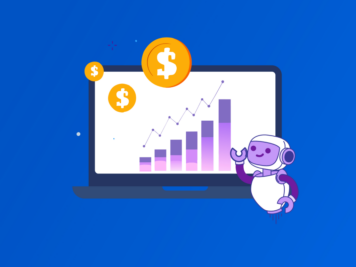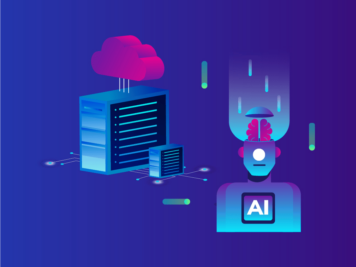The Q3 of 2024 witnessed a huge jump in generative AI. Venture capitalists decided to pump in $3.9 billion into 206 deals, of which over $2.9 billion went to US-based startups alone. This surge is a strong vote of confidence in technology, but it creates a pressing challenge for decision-makers: what frameworks, platforms, and tools can enable the robust architecture needed for effective gen AI infrastructure? Choosing a generative AI tech stack is more than just a well-financed trend. It’s a high-stakes decision where the right choice can lead to substantial innovation, while a mistake can prove costly.
Successful generative AI implementation requires much more than the right tools; it requires a thoughtful approach, informed by experience. From our experience of building over 200 technology products, including AI-powered solutions, we understand that it demands a strong commitment to smart planning with an understanding of the technology’s role in driving long-term impact.
This article aims to help businesses choose the right generative AI tech stack and ensure their investment meets both present objectives and future needs.
What is generative AI tech stack?
The potential of generative AI to produce new and original material stems from a powerful, integrated set of tools and technologies known as the generative AI tech stack. Key components include the following:
Deep Learning Frameworks
Deep learning frameworks are fundamental to generative AI because they enable the creation and training of sophisticated neural networks. These frameworks provide a high-level interface for creating, testing, and deploying deep learning models, allowing developers to experiment with various architectures.
TensorFlow, PyTorch, Keras, and MXNet are some of the most popular deep learning frameworks for generative AI applications. Each framework offers distinct features and capabilities, so select one that matches your team’s skills and project requirements.
Data preprocessing tools
Generative AI models require a large amount of data to understand patterns and reliably create new outputs. However, raw data frequently requires preprocessing to improve quality, remove noise, and convert it into a format suitable for training.
Data preparation tools help to streamline and improve the efficiency of this process. These tools can have a major influence on the performance of your generative AI models, so make sure they are compatible with the deep learning framework you have selected. Examples of data preparation tools include Apache Spark and Apache Hadoop.
Programming Languages
Programming languages are essential components of the generative AI tech stack, as they are used to write algorithms, generate models, and build generative AI applications.
Popular choices include Python, Java, C++, and R. The right language depends on your team’s skills and the unique requirements of the project. Python, for example, is known for its simplicity and extensive modules for data processing and machine learning.
Platforms and deployment tools
Generative AI models must be deployed into production using a specific set of tools and platforms. Cloud-based platforms are ideal for generative AI applications due to their flexibility, scalability, and system integration capabilities.
In general, major generative AI projects need larger technology stacks with numerous frameworks and programs to build and support the applications.
How to select the right generative AI tech stack
With so many tools and technologies available, selecting the right ones for your AI stack can be challenging. However, keeping a few key considerations in mind can help you narrow down your choices and select the right generative AI tech stack for your project.
Begin with purpose
What are the end goals? What is the business purpose behind the pursuit of generative AI? Even the most advanced technology stack will fail if you don’t have a defined goal. After all, generative AI isn’t about using technology for the sake of using it – it’s about addressing specific business issues, such as improving customer experiences, increasing supply chain resilience, or reimagining content development.
Knowing the “why” sets the foundation. Well-defined goals help in choosing the right technology stack. This technology stack should facilitate important metrics. For many, this may mean more sales, better customer interactions, or more efficient operations. Think about how each tool can help these particular KPIs when making your selection. If speed to market is important, pre-trained models may offer faster path, whereas custom model development can produce insights specifically tailored to complex problems.
Define your key use cases
To create value, generative AI must be deeply integrated with the company’s actual operational requirements. Defining use cases helps identify the tools and architecture suited for tasks like automating content or forecasting customer behavior.
Some applications can benefit from platforms like GPT-4 for sophisticated text generation or DALL-E for creative graphical content. TensorFlow and PyTorch are well suited for real-time predictive analytics and can impact industries ranging from retail to banking. Technologies such as Apache Kafka and Apache Flink are required for real-time data processing, allowing businesses to respond quickly to incoming data streams.
Knowing the nuances of these use cases will help you choose the right generative AI tech stack and make it clear which areas could benefit from off-the-shelf solutions and which from bespoke development.
The knowledge of the use cases helped us crack a healthcare project where we identified cell shapes and mitosis. We used classical image processing for localization and feature extraction, with a convolutional neural network for classification. An unsupervised neural auto-encoder acted as an image fingerprinting system for H&E-stained tissue samples.
Think data-first
Data is the backbone of generative AI, but quality outweighs quantity. The old adage “garbage in, garbage out” remains true—success hinges on ensuring high-quality data at every stage, from collection to processing.
BigQuery and Snowflake excel at handling structured data, enabling seamless data processing throughout the stack. More specialized tools, such as Hugging Face’s Transformers for NLP work or OpenAI’s CLIP for multimodal understanding, become crucial when working with unstructured data, such as the clutter of emails, social media posts, or consumer feedback.
In the end, it all comes down to making sure your stack facilitates data flow rather than hinders it, giving your models the size and quality they need. This is exactly what we achieved for our client. We enhanced an email marketing client’s dataset with AI-driven insights, boosting customer data with reviews and social media integrations, leading to more targeted emails and improved open rates.
Plan for growth and scalability
A generative AI tech stack must not only meet today’s demands but also be scalable. As your product evolves, your generative AI will demand more data. It will grow in complexity and have to adapt to advancing technology.
AWS and Google Cloud platforms can ensure your AI operations can grow with ease, while tools like Apache Kafka and Databricks can offer the infrastructure to manage real-time data streams.
But it’s important to strike a balance. While cloud platforms can grow quickly, hybrid models that combine cloud and on-premises resources give certain businesses a more secure and affordable option. Containers like Kubernetes and Docker give development teams the flexibility they want without compromising reliability, making them ideal for organizations looking to scale.
Budget with forecast
Although the cost of deployment and testing is high, investing in generative AI can have promising results.
Generative AI models, particularly large language models (LLMs), demands enormous processing power and memory. As these models become more complex, high-performance hardware such as GPUs and TPUs are required, significantly increasing operational costs.
These costs can skyrocket when AI activities scale, especially when continuous retraining or deployment across multiple environments is required. For resource-constrained companies, striking a balance between cost-effectiveness and model performance is even more crucial.
To avoid this, a thorough assessment of computing needs and costs is necessary. Companies should properly research their options. Because third-party services like OpenAI offer faster installation and lower upfront costs, they are attractive for smaller applications or those just starting to use AI. But there is a catch: as AI usage increases, these services can become more expensive, especially when working with large or complex models.
Open-source LLMs like LLaMA or Meta’s OPT might be more cost-effective in the long run. They allow customization and control over deployment, providing greater flexibility and reducing operational costs. Organizations should align generative AI efforts with future needs and scalability.
Balance in-house expertise with external support
The complex field of generative AI requires specific expertise. Companies must carefully assess their internal skills necessary to develop, deploy, and manage a complex AI stack. If there is a gap, third-party assistance or strategic alliances can be the filler.
External partners can provide comprehensive support, including maintenance, deployment, and development. Companies can adapt to changing project requirements by scaling up or down their AI teams as needed. These partners can also provide beneficial training and skills development opportunities for internal teams to improve their AI skills.
Here’s an example. A well-established SaaS platform in the US wanted to improve email open rates, reduce content creation time, and integrate AI into their email system. Lacking the in-house expertise, they partnered with us to bridge the talent gap.
We collaborated with their team to deploy a generative AI solution using DALL-E and ChatGPT. DALL-E produced striking visuals, while ChatGPT generated engaging email copy. Their emails not only resonated with existing customers but also caught the eye of potential ones, significantly boosting engagement.
Commit to security and compliance
Generative AI, particularly when working with sensitive data, needs strict security standards and compliance controls. For businesses in regulated industries, selecting a technology stack with built-in compliance controls is essential to avoid regulatory fines. It also helps maintain the trust of customers and stakeholders.
Healthcare or financial sector companies should choose platforms with strong, industry-aligned compliance standards for their applications. Strong security features, such as end-to-end encryption and secure access control, should be part of any AI stack worth its salt. Implementing solutions like AWS Key Management Service (KMS) for data security or Okta for access control can prevent costly breaches that could jeopardize trust and reputation.
Generative AI tech stack layers components
Generative AI technology stacks include tools and frameworks to build, train, and deploy generative models. This stack includes both proprietary and open-source technologies, enabling developers to build innovative generative AI applications.
| Layer | Component | Description |
| Application Layer | User Interfaces | Tools for user interaction with AI models. (e.g., web interfaces and mobile apps) |
| APIs | Interfaces for integrating AI models with other systems. | |
| Integration Modules | Components for integrating AI-generated content into existing systems. | |
| End-Use Applications | Specific applications built on top AI models. | |
| Model Layer | Model Architectures | Different architectures for various generation tasks (e.g., GANs, VAEs, Transformers). |
| Training Frameworks | (e.g., TensorFlow, PyTorch, JAX). | |
| Pre-trained Models | Models pre-trained on large datasets. | |
| Model Management | Tools for versioning, storing, and retrieving models. | |
| Infrastructure Layer | Hardware Resources | GPUs, TPUs, and CPUs for AI computations. |
| Storage Solutions | Storage for datasets and models. | |
| Networking | High-bandwidth networks for data transfer. | |
| Cloud Services | Cloud platforms for scalable AI resources. | |
| Orchestration and Monitoring Layer | Orchestration Tools | Tools for managing AI services (e.g., Kubernetes, Docker Swarm). |
| Monitoring Tools | Tools for monitoring AI performance and infrastructure health (e.g., Prometheus, Grafana). | |
| Logging and Diagnostics | Tools for collecting and analyzing logs. | |
| Resource Management | Tools for dynamic resource allocations. | |
| Security Measures | Security protocols and practices to protect data and models. |
Conclusion
Selecting a generative AI tech stack is a flexible, long-term investment, rather than a mere technical activity. The right tech stack can help you achieve your goals now and develop as your business expands—from identifying purposes and use cases to budgeting, scaling, and security planning.
Generative AI has a special ability to reconfigure customer relationships, rethink operational effectiveness, and open up new markets. Finding the “best” tools is only one aspect of the problem; another is developing a robust, scalable architecture that can be used as a springboard and foundation. For those willing to invest in developing it from the ground up, generative AI is a game-changing opportunity.
Make the right choice for your AI infrastructure. Connect with us or email us to learn more.
FAQs
What are the most important things to consider when selecting a generative AI tech stack?
When selecting a generative AI tech stack, it’s crucial to consider factors such as security, compliance, integration, ease of use, and future proofing. Conducting POCs and planning implementation are essential for successful deployment.
What are the challenges of building a generative AI tech stack?
Building a generative AI tech stack involves challenges like choosing the right components, ensuring system compatibility, meeting regulatory requirements, and future proofing. Success also depends on technical expertise and resources.
Why is choosing the right generative AI tech stack important?
Selecting the right generative AI technology stack is critical to:
- Improving model performance and controlling infrastructure costs
- Enabling efficient deployment and scaling
- Optimizing the development process
- Ensuring ongoing project support and updates
How does the generative AI tech stack differ from a traditional ML tech stack?
While the generative AI tech stack has some parallels with classical machine learning, it often requires more specialized tools and infrastructure. Generative AI relies heavily on deep learning frameworks designed for complex neural networks, such as GANs and Transformers, which require more computing resources (GPU/TPU) and extensive data preparation approaches to handle large datasets. Furthermore, deployment techniques for generative models often favor real-time content creation and scalability, resulting in different infrastructure choices than standard ML deployments.
What programming language is best for a generative AI tech stack?
Python is the preferred choice for a generative AI technology stack for a variety of reasons. Its broad ecosystem of libraries, including TensorFlow and PyTorch, provides powerful tools for deep learning. Python also has a huge and active community, providing plenty of help and resources for developers. Finally, Python’s simple syntax and readability allow for rapid development and prototyping, making it an ideal language for generative AI applications.









